5 Relaxing Painting Techniques to Try Out
This article explores five soothing painting techniques that can help you unwind and express your creativity. Each method offers unique benefits, making it easy to find the perfect fit for your artistic journey.
Watercolor washes are a gentle way to create soft backgrounds and gradients. This technique allows for fluidity and spontaneity, encouraging relaxation as colors blend effortlessly on the canvas. Imagine dipping your brush into a pool of water and watching as the colors swirl and dance across the page, merging into beautiful hues. It’s like a serene river flowing, where every stroke brings a new discovery. You don’t have to worry about making mistakes; instead, you can enjoy the process of layering colors, creating a dreamy atmosphere that soothes the mind.
Finger painting invites a tactile experience that can be both playful and liberating. Using your hands to apply paint fosters a direct connection with the medium, enhancing mindfulness and enjoyment. When you dive into finger painting, it’s not just about the final piece; it’s about the joy of creation. The sensation of cool paint gliding over your skin can be incredibly grounding, allowing you to feel every texture and color. This hands-on approach can transport you back to childhood, where the focus was purely on fun rather than perfection.
Mixing colors with your fingers can lead to unexpected and beautiful results. This exploration not only relaxes the mind but also nurtures creativity as you discover new shades and tones. The act of blending colors can be akin to cooking; just as a pinch of salt can transform a dish, a dab of blue can turn your palette into a masterpiece. Don’t be afraid to get messy—embrace the chaos! The surprise of discovering new colors can be a delightful experience that keeps you engaged and excited.
Finger painting encourages embracing imperfections, allowing you to let go of control and enjoy the process. This mindset fosters relaxation and self-acceptance, making it a therapeutic practice. When you let go of the need for perfection, you open the door to authenticity. Each smudge and streak tells a story, and rather than seeing them as flaws, you can view them as unique characteristics of your artwork. This approach can be liberating, helping you to appreciate the beauty in the unexpected.
Using your fingers to create textures adds depth to your artwork. This hands-on approach allows you to experiment freely, enhancing the overall sensory experience of painting. Imagine the thrill of pressing your fingers into wet paint and feeling the ridges form beneath your touch. You can create a variety of textures, from smooth and flowing to rough and jagged, simply by changing your technique. This tactile engagement not only enhances your painting but also allows you to express your emotions in a physical way.
Layering is a calming technique that involves building up colors gradually. This method not only creates depth but also encourages patience and mindfulness throughout the painting process. Think of layering as building a cozy blanket; each layer adds warmth and comfort, creating a rich tapestry of colors. As you apply each layer, you can take a moment to breathe and reflect, making it an excellent practice for relaxation. The anticipation of seeing how each layer interacts with the others can be both exciting and soothing.
Abstract expressionism focuses on conveying emotions through spontaneous brushwork and color choices. This technique encourages freedom of expression, allowing you to relax and paint without the constraints of realism. It’s like dancing with your brush; there’s no right or wrong, just pure movement and emotion. You can splash, swirl, and flick paint onto the canvas, letting your feelings guide your hand. The result? A vibrant expression of your inner world that can be both cathartic and exhilarating.
Bold colors can evoke strong emotions and energize your artwork. Experimenting with vibrant hues can be a liberating experience that enhances your mood while painting. Think about how a bright red can ignite passion or a deep blue can instill calmness. By playing with these colors, you can create a visual symphony that reflects your emotional state. It’s not just about the colors you choose; it’s about how they make you feel and how they can transform your artwork into a personal expression of your journey.
Gesture painting emphasizes movement and rhythm, inviting you to express yourself through dynamic strokes. This technique promotes relaxation by allowing your body to flow with the creative process. Picture yourself moving your whole arm, letting the brush glide across the canvas in sweeping motions. It’s a dance of creativity where your body becomes an extension of your emotions. The result is a piece that pulsates with energy, capturing the essence of your experience in a way that is both freeing and exhilarating.
Drawing inspiration from nature can be incredibly soothing. Techniques like leaf printing or using natural elements to create textures help connect you with the environment, enhancing relaxation and creativity. Imagine pressing a leaf into paint and then onto your canvas, leaving behind an imprint of nature’s beauty. This connection with the natural world can ground you, providing a sense of peace and tranquility as you create. Plus, it’s a wonderful way to incorporate the outdoors into your art, reminding you of the beauty that surrounds us.
- What materials do I need for these painting techniques? You’ll need basic supplies like paints, brushes, paper or canvas, and perhaps some natural elements like leaves or flowers.
- Can I use these techniques if I’m a beginner? Absolutely! These techniques are perfect for beginners as they emphasize exploration and enjoyment over perfection.
- How do I clean up after finger painting? Use soap and water to clean your hands and any surfaces. Most paints will wash off easily when wet.
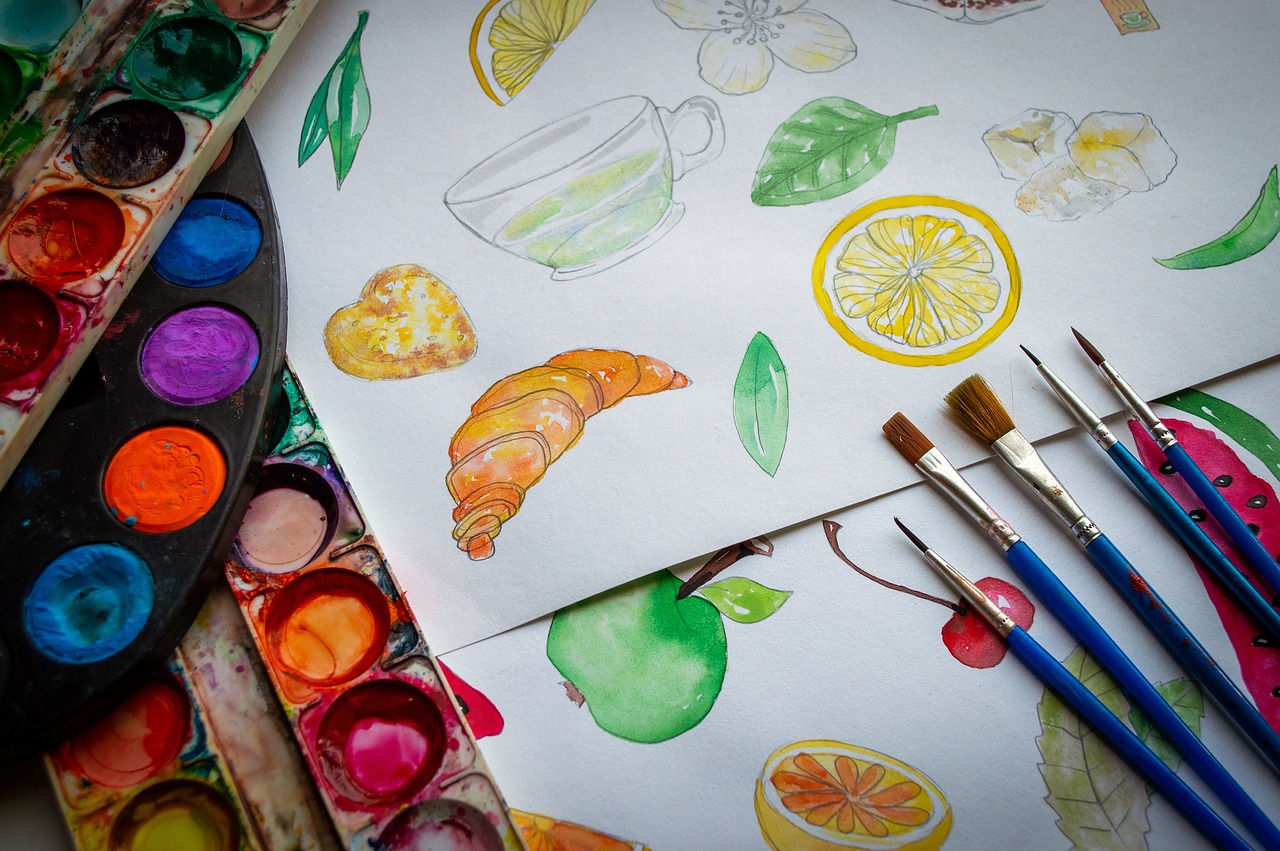
Watercolor Washes
Watercolor washes are a gentle and soothing technique that allows artists to create soft, ethereal backgrounds and gradients. Imagine dipping your brush into a pool of color, feeling the smoothness of the paint as it glides across the canvas. This technique encourages a sense of fluidity and spontaneity, which is perfect for anyone looking to unwind and let their creativity flow. As you apply the paint, you’ll notice how the colors blend effortlessly, creating beautiful, unexpected transitions that can be both calming and exhilarating.
One of the best aspects of watercolor washes is their versatility. You can use them as a background for more detailed work or as a standalone piece that evokes a sense of tranquility. To achieve a stunning watercolor wash, consider the following steps:
- Prepare Your Materials: Gather your watercolor paints, brushes, and watercolor paper. Make sure to have plenty of water on hand!
- Wet the Paper: Lightly dampen your watercolor paper with clean water using a large brush. This will help the paint spread and blend more easily.
- Choose Your Colors: Select a few colors that resonate with you. Think about how they make you feel and how they might work together.
- Apply the Paint: Start with your lightest color and apply it to the wet paper. Watch as the color spreads and mingles with the water.
- Layering: Once the first layer is dry, you can add additional colors and layers to create depth and interest.
As you practice this technique, you'll find that it's not just about the final product but the journey of creating it. The act of painting with watercolors can be incredibly meditative, allowing your mind to wander and your worries to fade away. Plus, the unpredictability of how the colors will mix and dry keeps each session exciting and fresh!
Watercolor washes can also be a fantastic way to explore color theory. By mixing different colors together on your palette or directly on the paper, you can create a wide range of shades and tones. This exploration is not only relaxing but also enhances your understanding of how colors interact with one another. You might even find yourself surprised by the beautiful hues you create!
So, if you're looking to unwind, grab some watercolors and let the colors guide you. Embrace the fluidity of the medium, and remember that there are no mistakes—only happy accidents that could lead to beautiful discoveries!
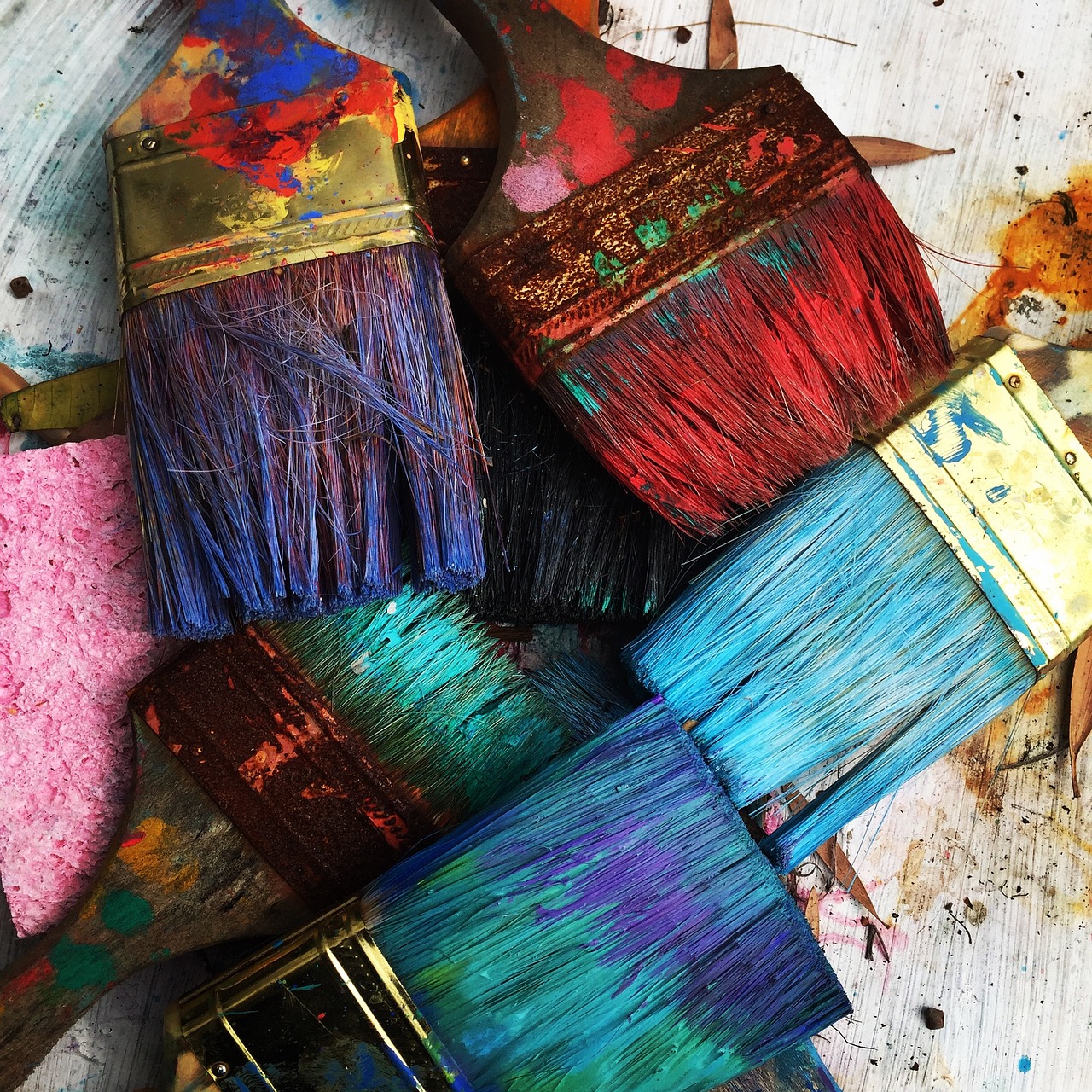
Finger Painting
Finger painting is not just for kids; it's an incredibly therapeutic and liberating art form that invites you to dive into a world of color and creativity. Imagine feeling the cool, smooth paint glide across your fingertips as you create something uniquely yours. This technique encourages you to reconnect with your inner child, allowing for a playful exploration of textures and colors. It’s like dancing with paint, where your hands become the brushes and your canvas transforms into a playground of expression.
One of the most exciting aspects of finger painting is the tactile experience it offers. The sensation of paint squishing between your fingers can be both soothing and invigorating. As you apply paint directly with your hands, you cultivate a deeper connection with the medium, enhancing your sense of mindfulness. This hands-on approach allows you to immerse yourself in the moment, leaving behind worries and distractions. You might find yourself lost in the rhythm of your movements, similar to how one might get lost in a favorite song.
When you mix colors with your fingers, you unlock a world of unexpected beauty. The spontaneity of blending hues can lead to stunning results that you might not achieve with traditional brushes. Imagine swirling vibrant reds into calming blues, resulting in a mesmerizing shade of purple that sings with life. This exploration not only relaxes the mind but also nurtures your creativity, as you discover new shades and tones that resonate with your emotions. It’s like a treasure hunt where every stroke reveals a hidden gem!
Finger painting teaches you to embrace imperfections. In a world obsessed with perfection, this technique encourages you to let go of control and enjoy the process. Each smudge and fingerprint tells a story, reminding you that art is not about flawless execution but rather about expression and feeling. This mindset fosters relaxation and self-acceptance, transforming your painting session into a form of meditation. You may find that the more you let go, the more joy you experience in the act of creation.
Using your fingers to create textures adds remarkable depth to your artwork. You can experiment with various techniques, such as dabbing, swirling, or dragging your fingers across the canvas. Each method produces different effects that can enhance your piece significantly. For example, a simple swipe of your finger can create a beautiful gradient, while pressing your fingertips into the paint can produce stunning patterns. This hands-on approach allows you to experiment freely, enhancing the overall sensory experience of painting. It’s like sculpting with color, where your fingertips become the tools of your imagination.
In conclusion, finger painting is not just a method of applying paint; it’s an experience that invites you to explore your creativity in a fun and engaging way. Whether you’re looking to unwind after a long day or simply want to express yourself, this technique offers a unique opportunity for relaxation and artistic exploration. So go ahead, dip your fingers in some paint, and let your creativity flow!
- Can I use any type of paint for finger painting? Yes, you can use non-toxic acrylics, watercolors, or even finger paints specifically designed for this purpose.
- Is finger painting suitable for all ages? Absolutely! Finger painting is a wonderful activity for both children and adults, promoting creativity and relaxation.
- What materials do I need for finger painting? You’ll need paint, a canvas or paper, and some water for cleanup. An apron or old clothes is also a good idea!
- How can I clean up after finger painting? Most paints can be washed off with soap and water, but it’s best to clean your hands immediately after painting to avoid stains.

Exploring Color Mixing
Color mixing is not just a technique; it's an adventure waiting to unfold on your canvas! When you dive into the world of finger painting, you open the door to a playful exploration of hues and shades that can be both mesmerizing and therapeutic. Imagine the excitement of swirling your fingers through a palette of colors, watching as they blend and transform into something entirely new. It's like alchemy, where ordinary pigments become extraordinary shades that sing with life!
As you begin to mix colors, you might find yourself creating unexpected combinations that surprise you. This spontaneity is what makes finger painting so liberating. You might start with a vibrant red and a cool blue, and before you know it, you’ve conjured up a stunning shade of purple. The beauty of this technique is that there are no strict rules; instead, it encourages you to embrace your instincts and let your creativity flow. It’s a joyful dance between your fingers and the paint, where every swipe and smudge brings forth new possibilities.
One of the most delightful aspects of color mixing is the way it nurtures your imagination. As you experiment with different combinations, you may stumble upon colors that evoke memories or feelings—like a warm orange that reminds you of a sunset or a deep green that transports you to a tranquil forest. This emotional connection to your artwork can enhance relaxation and mindfulness, allowing you to lose yourself in the process.
To enhance your experience, consider setting up a simple color mixing station. Here’s a quick guide to get you started:
| Color | Mix With | Resulting Color |
|---|---|---|
| Red | Blue | Purple |
| Yellow | Blue | Green |
| Red | Yellow | Orange |
| White | Any Color | Pastel Shade |
As you mix colors, don’t be afraid to experiment! Try adding a bit of white to lighten a hue or a touch of black to deepen it. The possibilities are endless, and each new shade can lead you to a fresh idea or a new direction for your artwork. Remember, the journey is just as important as the destination, so take your time and enjoy the process.
In conclusion, exploring color mixing through finger painting not only relaxes the mind but also fosters a sense of self-discovery and creativity. So, roll up your sleeves, get your hands messy, and let the colors guide you on a wonderful artistic journey!
- What materials do I need for finger painting? You will need non-toxic paints, a canvas or thick paper, and perhaps some water and cloth for cleanup.
- Can anyone try finger painting? Absolutely! Finger painting is suitable for all ages and skill levels. It’s all about having fun and expressing yourself.
- How do I clean up after finger painting? Use warm soapy water to wash your hands and any surfaces. Most paints will come off easily, especially if you clean them soon after painting.
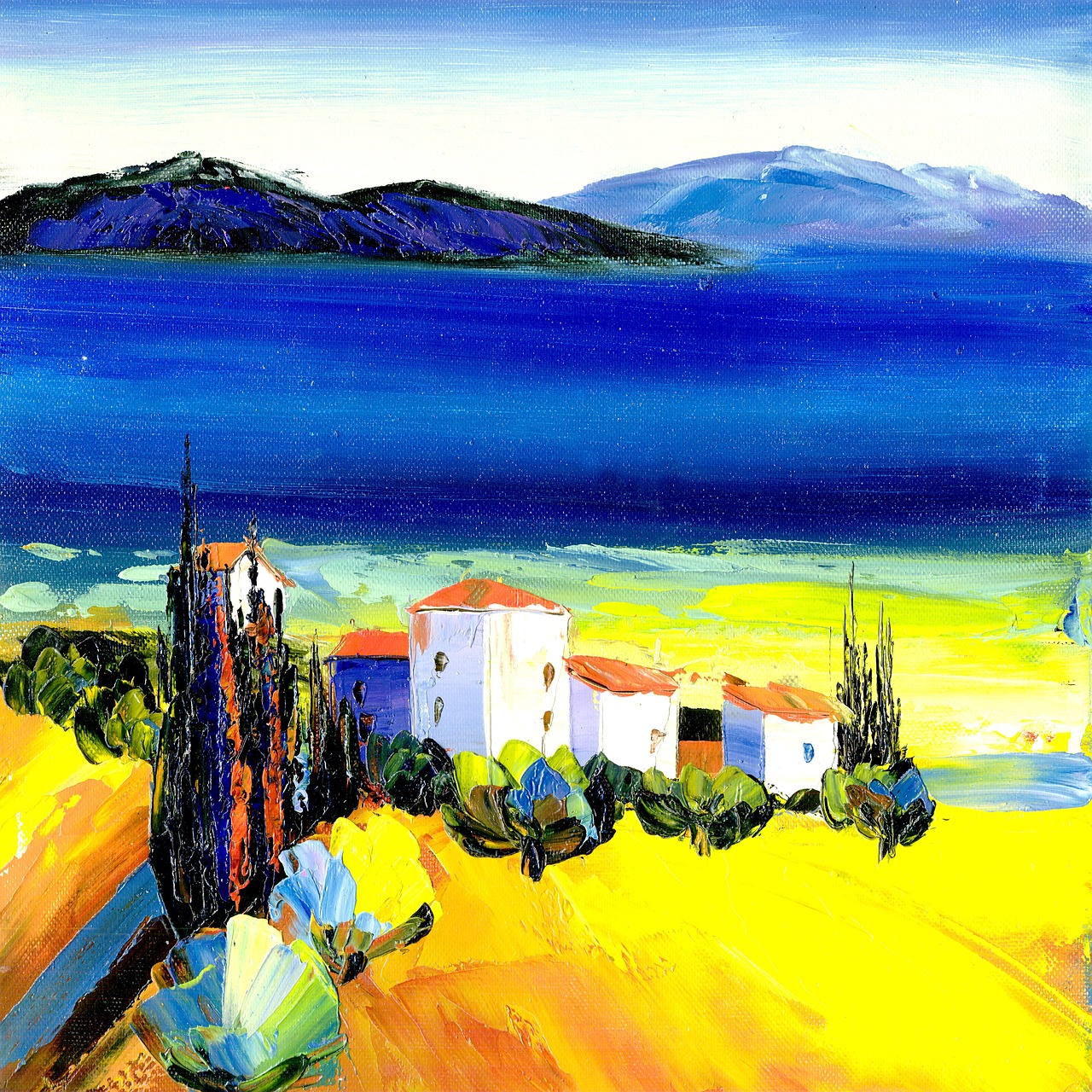
Embracing Imperfection
In the world of art, the pursuit of perfection can often become a daunting task, leaving many aspiring artists feeling overwhelmed and discouraged. However, when it comes to finger painting, one of the most liberating aspects is the opportunity to embrace imperfection. This technique encourages you to let go of your inhibitions and dive headfirst into the creative process without the pressure of achieving flawless results. Imagine your canvas as a playground where every stroke, every smudge, and every unexpected splash of color contributes to the overall beauty of your artwork.
When you allow yourself to embrace imperfections, you open the door to a more authentic expression of your emotions and thoughts. Each brush of your fingers against the canvas becomes a reflection of your unique journey, imperfections included. This mindset not only fosters relaxation but also cultivates a sense of self-acceptance. Instead of striving for a perfect outcome, you begin to appreciate the beauty in the unpredictable and the spontaneous.
Moreover, the tactile experience of finger painting enhances this connection to imperfection. As you use your hands to apply paint, you can feel the texture of the canvas and the viscosity of the colors, making the process not just visual but also sensory. This physical engagement encourages a state of mindfulness, allowing you to focus on the moment rather than the end product. You might be surprised at how liberating it feels to let go and allow your fingers to dance across the surface, creating textures and patterns that are uniquely yours.
By embracing imperfection, you also open yourself up to a world of experimentation. You might find that mixing colors with your fingers leads to unexpected and beautiful results, as the hues blend in ways that a brush simply can't replicate. This exploration can be incredibly fulfilling, as it nurtures your creativity and inspires you to try new techniques without fear of failure. Remember, every great artist started somewhere, and often, the most memorable pieces are those that tell a story of the artist's journey, complete with its ups and downs.
In conclusion, the essence of finger painting lies in the freedom to express yourself without the constraints of perfection. So, the next time you pick up some paint, remind yourself that it's not about creating a masterpiece; it's about enjoying the process and allowing your creativity to flow. Embrace the imperfections, and you might just find that they lead you to unexpected and delightful places in your artistic journey.
- What materials do I need for finger painting?
All you need is some non-toxic paint, a canvas or paper, and of course, your fingers! You can also use tools like sponges or brushes if you want to mix things up.
- Can finger painting be therapeutic?
Absolutely! Many people find that the tactile nature of finger painting helps reduce stress and anxiety, making it a great form of relaxation and self-expression.
- How do I clean up after finger painting?
Cleaning up is simple! Just wash your hands with soap and water, and if you get paint on surfaces, a damp cloth usually does the trick. For your canvas, let it dry, and you can decide if you want to keep it or paint over it later.
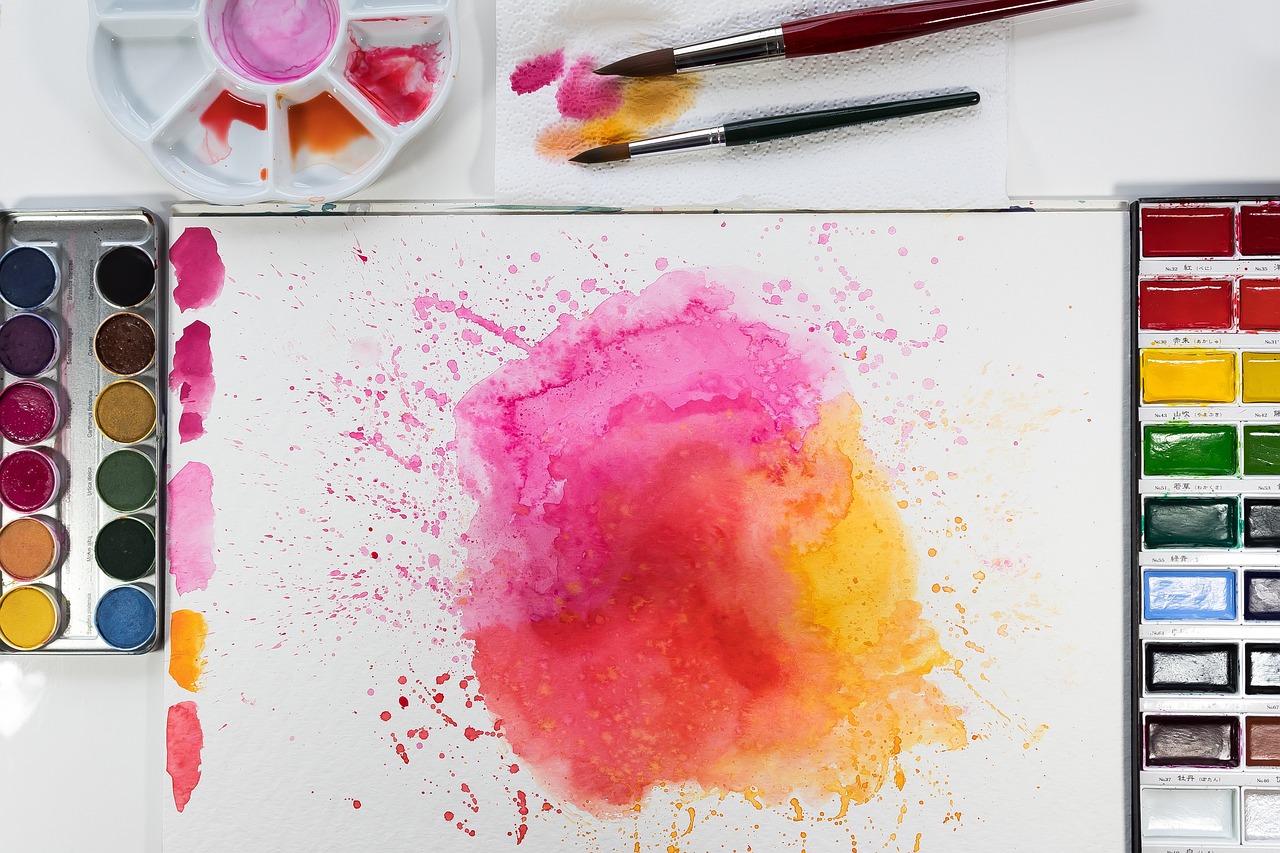
Creating Textures
When it comes to painting, can transform a simple piece of art into a multi-dimensional experience. Imagine running your fingers through the paint, feeling the different layers and patterns emerge beneath your touch. This technique not only enhances the visual appeal of your artwork but also adds a sensory element that can be incredibly satisfying. By using your fingers, brushes, or even unconventional tools, you can create a variety of textures that invite the viewer to explore your work more intimately.
One of the most exciting aspects of creating textures is the freedom it offers. You can experiment with different materials and techniques to discover what resonates with you. For example, you might use a palette knife to scrape paint across the canvas, producing a rugged surface that contrasts beautifully with smoother areas. Alternatively, you could try dabbing paint with a sponge or crumpling tissue paper to create unique patterns. The possibilities are endless, and the joy of discovery can be a relaxing and fulfilling part of the painting process.
As you delve into texture creation, consider incorporating natural elements into your artwork. Leaves, twigs, or even sand can be pressed into the paint to leave behind interesting impressions. This not only connects you with nature but also encourages a playful approach to your art. You might find yourself laughing at the unexpected results, and that’s the beauty of this technique—it's all about the journey, not just the destination.
Here are some techniques to consider when creating textures:
- Impasto: This technique involves applying thick layers of paint, allowing for a sculptural effect that stands out from the canvas.
- Stippling: Using a brush to apply small dots of paint can create a textured appearance that adds depth to your work.
- Collage: Incorporating different materials such as fabric or paper can introduce exciting textures and visual interest.
Ultimately, creating textures in your painting is about exploration and self-expression. Don't be afraid to make mistakes or try something new; these moments often lead to the most rewarding outcomes. So, roll up your sleeves, dive into your paint, and let your creativity flow as you discover the wonderful world of textures!
| Question | Answer |
|---|---|
| What materials do I need to create textures in my paintings? | You can use a variety of materials such as brushes, palette knives, sponges, and even natural elements like leaves or sand. |
| Can I create textures with watercolor paints? | Yes! You can use techniques like wet-on-wet, salt application, or layering to create interesting textures with watercolors. |
| Is texture important in painting? | Absolutely! Texture adds depth and interest to your artwork, making it more engaging for viewers. |
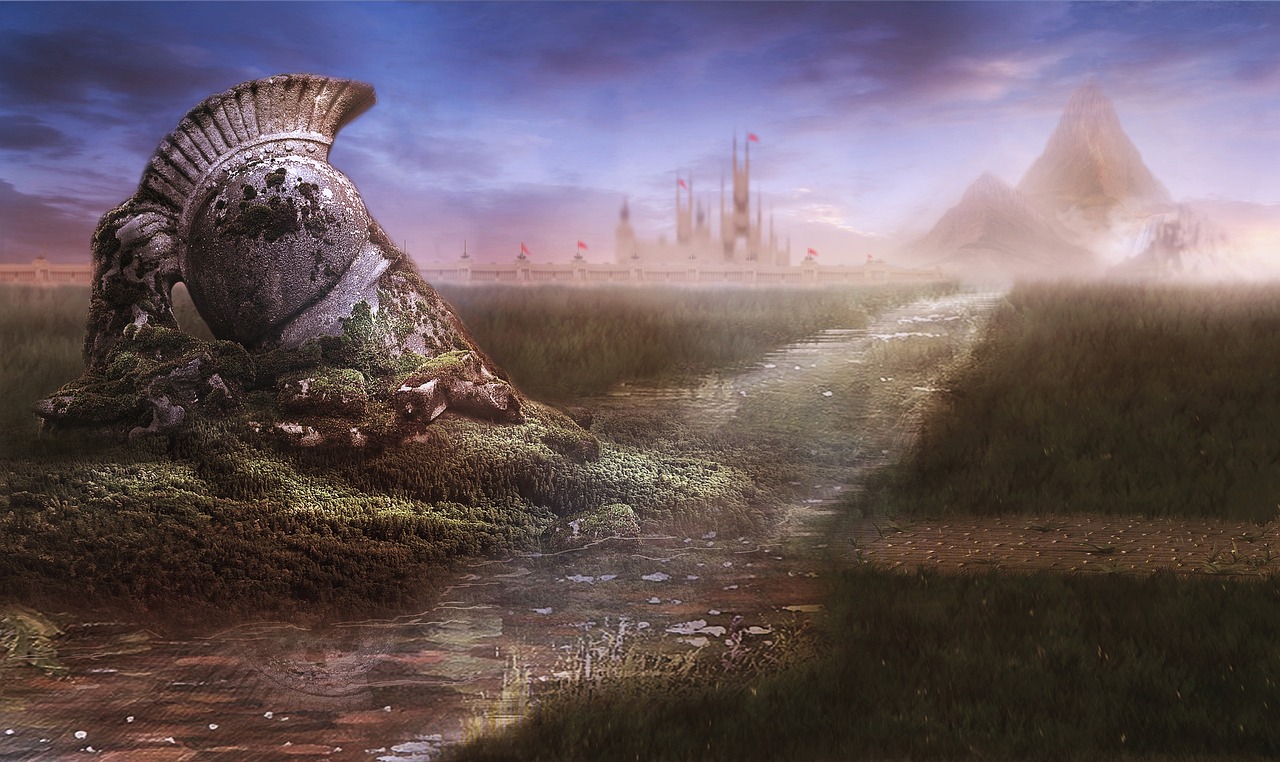
Layering Techniques
Layering techniques in painting are not just about stacking color upon color; they're a journey into the depths of your creativity. Imagine each layer as a new chapter in a story, where every brushstroke adds more detail and emotion to your artwork. This method encourages you to take your time, allowing the colors to interact and evolve on the canvas, which is incredibly calming. The beauty of layering lies in its ability to create depth and richness, transforming a simple piece into a mesmerizing visual experience.
To effectively use layering techniques, start with a base layer. This initial wash sets the tone for your piece, whether you want a soft pastel background or a bold, dark foundation. Once your base layer is dry, you can begin to build upon it with additional colors. Here’s where the magic happens: as you apply each new layer, you can blend, glaze, or even scrape away parts to reveal the layers beneath. This process not only enhances the visual interest of your work but also invites a sense of discovery as you explore how each color interacts with the others.
One of the most satisfying aspects of layering is the transparency of certain paints, particularly watercolors and acrylics. When you apply a transparent layer over a dry one, you can see the colors beneath shining through, creating a beautiful effect. This technique allows for a play of light and shadow, making your artwork come alive. As you layer, consider the following tips:
- Patience is Key: Allow each layer to dry completely before adding the next. This helps maintain the integrity of your colors and prevents muddiness.
- Experiment with Opacity: Use both opaque and transparent paints to create dynamic contrasts.
- Don’t Be Afraid to Scrape: If a layer doesn’t work, you can always scrape it away or use a damp cloth to lift off some paint. This adds texture and spontaneity.
As you delve deeper into layering techniques, you'll find that it not only enhances your artwork but also promotes a meditative state. The repetitive actions of applying, drying, and observing can lead to a flow state where time seems to stand still. This is where creativity flourishes, allowing you to express emotions and thoughts that might otherwise remain unvoiced.
In conclusion, layering techniques are more than just a method; they are a therapeutic practice that invites you to slow down and engage with your art. Whether you're a seasoned artist or just starting out, embracing this approach can lead to stunning results and a deeper connection to your creative self. So grab your brushes, choose your colors, and let the layers unfold!
Q: What type of paint is best for layering?
A: Acrylics and watercolors are both excellent choices for layering. Acrylics offer versatility with both opaque and transparent options, while watercolors allow for beautiful transparent layers.
Q: How can I prevent my colors from becoming muddy when layering?
A: Ensure each layer is completely dry before applying the next one. Additionally, use a limited color palette to maintain harmony and prevent muddiness.
Q: Can I use layering techniques on canvas and paper?
A: Yes! Layering techniques can be applied to various surfaces, including canvas, watercolor paper, and wood panels. Just be mindful of the type of paint and surface you choose.
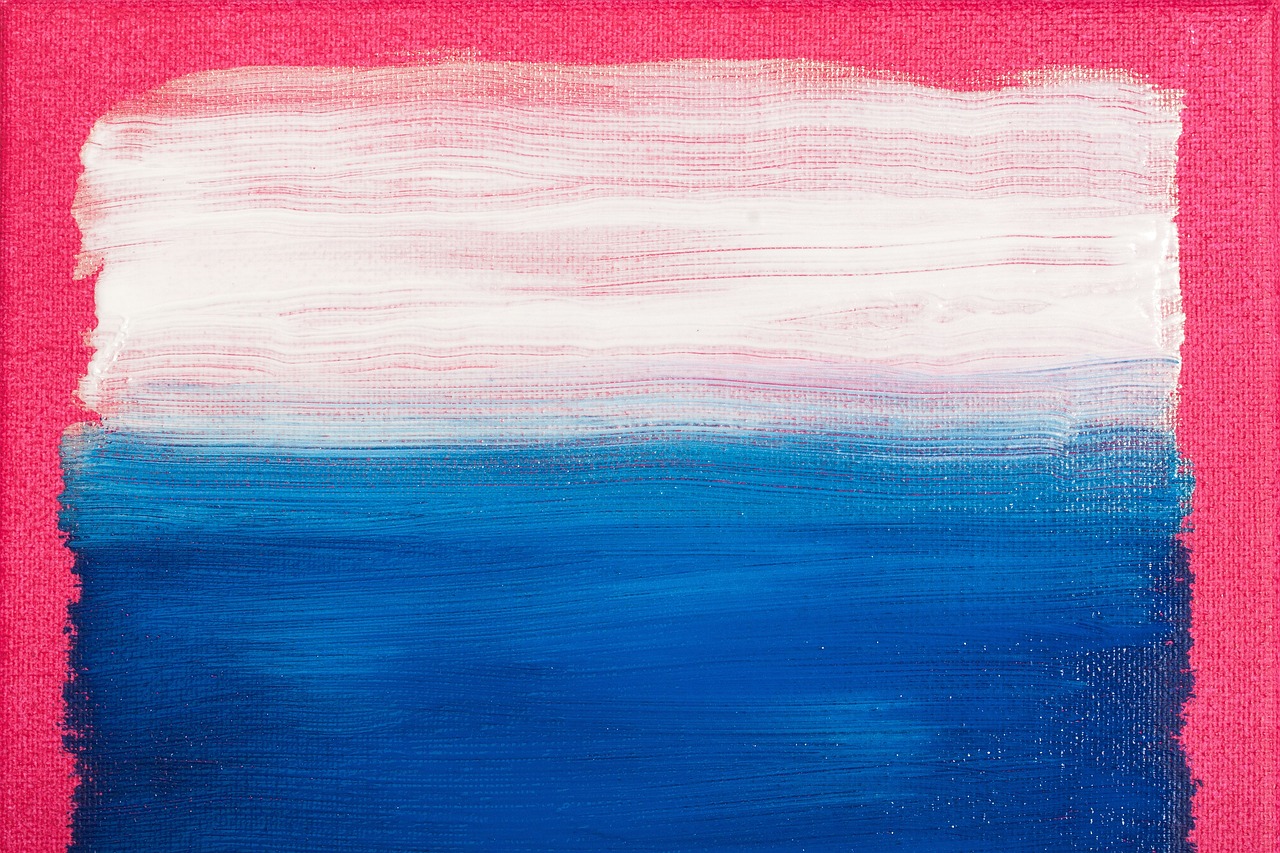
Abstract Expressionism
is more than just a painting technique; it’s a movement that invites you to unleash your emotions and creativity without the constraints of traditional representation. Imagine standing in front of a blank canvas, feeling the weight of the world lift off your shoulders as you dip your brush into vibrant colors. This technique encourages you to express your feelings through spontaneous brushwork and bold color choices, creating a dynamic and personal artwork that reflects your inner self.
One of the most liberating aspects of abstract expressionism is the freedom it offers. You don’t have to worry about making things look “right” or conforming to any rules. Instead, you can let your emotions guide your hand. Whether you’re feeling joyful, angry, or contemplative, your brush strokes can embody those feelings. This connection between emotion and art can be incredibly therapeutic, allowing you to process your feelings while you create.
When you dive into abstract expressionism, consider using bold colors. These colors can evoke strong emotions, energizing your artwork and enhancing your mood. For instance, vibrant reds can convey passion, while calming blues may evoke tranquility. Mixing these hues can lead to unexpected results, creating a visual symphony that resonates with your audience and yourself. It’s like a dance of colors on your canvas, each stroke telling a story of its own.
Another fascinating element of this technique is gesture painting. This method emphasizes movement and rhythm, inviting you to express yourself through dynamic strokes. As you paint, allow your body to flow with the creative process—let your arm swing, your wrist twist, and your fingers dance across the canvas. This physical engagement can enhance relaxation, transforming your painting session into a meditative experience.
To truly embrace abstract expressionism, remember that there are no mistakes, only opportunities for discovery. Each brushstroke adds to the narrative of your artwork. If you spill paint or create an unintended texture, don’t fret! Instead, consider it a beautiful accident that adds depth and character to your piece. This mindset fosters a sense of freedom and self-acceptance, allowing you to connect with your artistic self on a deeper level.
In summary, abstract expressionism is a powerful technique that encourages personal expression and emotional release. By embracing bold colors and dynamic movements, you can create art that is not only visually stunning but also deeply meaningful. So grab your brushes, let your emotions flow, and immerse yourself in the exhilarating world of abstract expressionism!
- What materials do I need for abstract expressionism? You can start with basic acrylic or oil paints, a variety of brushes, and a canvas or paper. Don't forget to have some rags or paper towels handy for cleanup!
- Can I use other tools besides brushes? Absolutely! Palette knives, sponges, and even your fingers can be great tools to create different textures and effects.
- Is there a specific technique I should follow? There’s no specific technique to follow. The beauty of abstract expressionism lies in its freedom—just let your emotions guide you!
- How can I overcome the fear of making mistakes? Remember that every mark you make contributes to your artwork. Embrace imperfections as part of the creative journey.
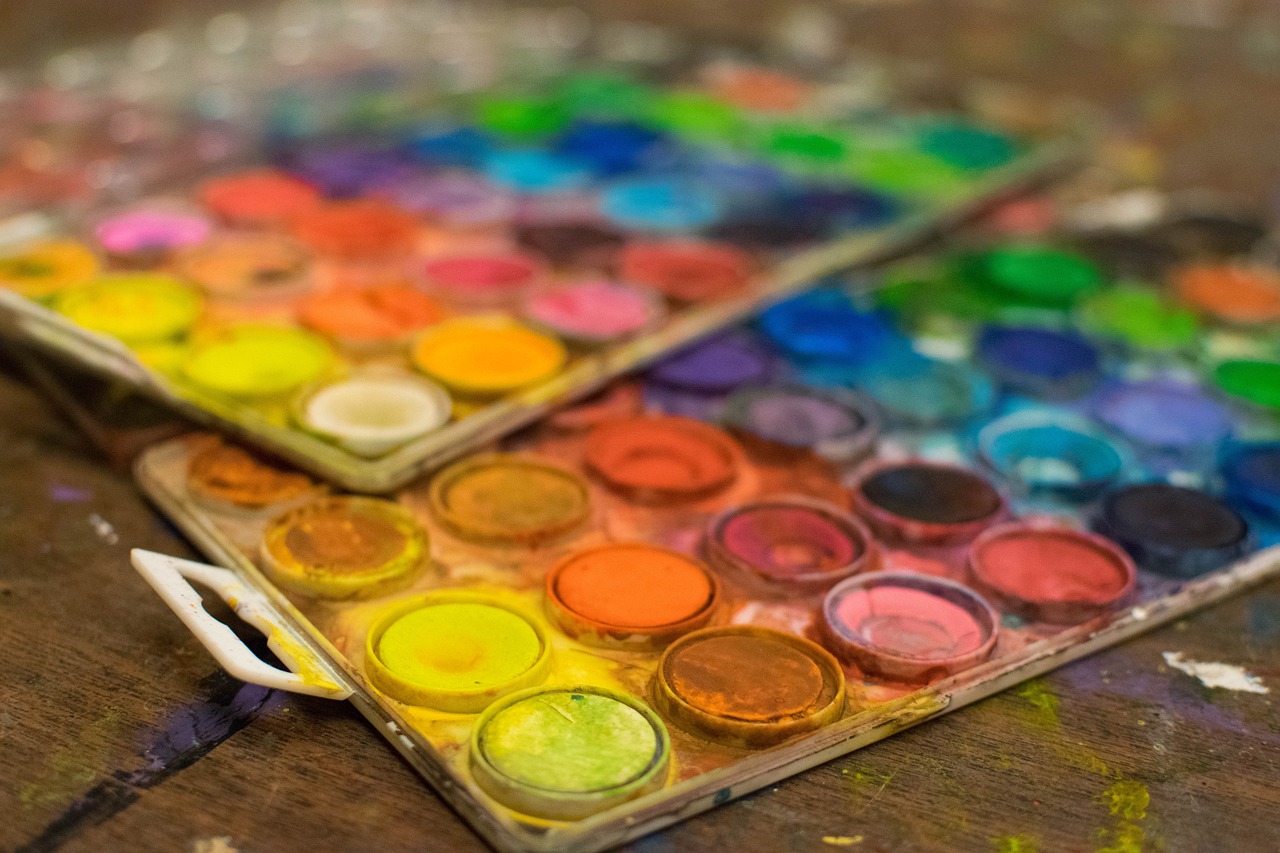
Using Bold Colors
When it comes to painting, bold colors can transform your canvas into a vibrant realm of emotions. Imagine standing before a blank canvas, armed with tubes of fiery reds, electric blues, and sunny yellows. The moment you squeeze those colors onto your palette, it’s like unleashing a burst of energy that can invigorate your spirit. Bold colors are not just about being loud; they are about expressing feelings that words often fail to convey. They invite you to step outside the lines of convention and dive into a world of personal expression.
Using bold colors can evoke strong emotions and add an electrifying dynamic to your artwork. For instance, a splash of bright orange can radiate warmth and enthusiasm, while deep purples might evoke a sense of mystery and intrigue. The beauty of working with bold hues lies in their ability to energize your mood while painting. It’s almost as if these colors possess a life of their own, dancing across the canvas and encouraging you to let go of any inhibitions. Have you ever noticed how a vibrant color can make you feel more alive? It’s like the colors are whispering, “Go ahead, express yourself!”
As you experiment with bold colors, consider the following techniques to enhance your painting experience:
- Layering: Start with a lighter base and gradually add bolder colors on top. This technique creates depth and allows the colors to interact in fascinating ways.
- Contrast: Pair bold colors with softer shades to create striking contrasts that draw the eye and add interest to your work.
- Mixing: Don’t be afraid to mix bold colors to create new shades and tones. This can lead to unexpected and delightful results that surprise you!
Moreover, the process of applying bold colors can be incredibly liberating. You can use large brushes or even your fingers to apply paint, allowing for a more visceral connection with your artwork. The act of slapping vibrant paint onto the canvas can be akin to a cathartic release, where you let go of your worries and immerse yourself in the creative flow. Each stroke becomes a rhythmic dance, a celebration of color that ignites your imagination.
Incorporating bold colors into your painting practice is not just about aesthetics; it’s also about embracing your unique voice. In a world that often encourages conformity, painting with bold hues is a reminder that it’s perfectly fine to stand out and be different. So, why not take that leap? Grab those vibrant colors and let them guide you on a journey of self-discovery and artistic expression!
- Q: What are some tips for choosing bold colors?
A: Start by considering the emotions you want to convey. Look at color wheels or palettes for inspiration, and don’t hesitate to experiment! - Q: Can I mix bold colors with pastels?
A: Absolutely! Mixing bold and pastel colors can create stunning contrasts and add depth to your artwork. - Q: How do I know if my painting has too many bold colors?
A: Trust your instincts! If it feels overwhelming, step back and evaluate. Sometimes less is more, so consider toning down a few areas.
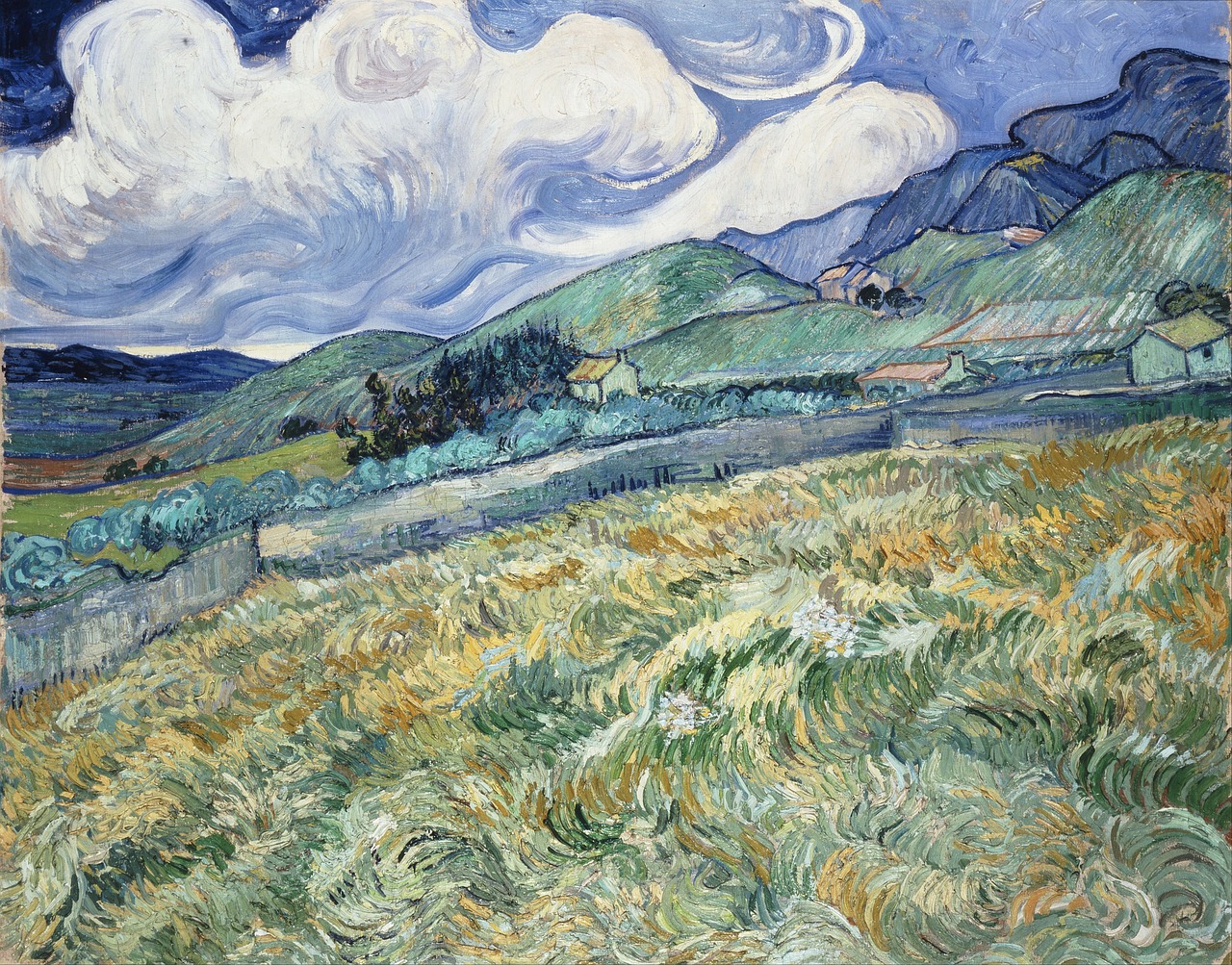
Gesture Painting
Gesture painting is an exhilarating technique that invites you to unleash your inner artist without the constraints of traditional painting methods. Imagine standing before a blank canvas, your heart racing with anticipation as you dip your brush into vibrant colors. The beauty of gesture painting lies in its emphasis on movement and rhythm, allowing you to express your emotions through dynamic strokes. This technique is all about letting go of perfection and embracing spontaneity, making it a truly liberating experience.
When you engage in gesture painting, you’re not just applying paint; you’re creating a visual symphony. Each stroke becomes a dance, a reflection of your mood and energy at that moment. The act of moving your body—whether it’s swaying, jumping, or simply shifting your weight—infuses your artwork with life. It’s almost like you’re choreographing a performance on the canvas, where every twist and turn of your brush captures a fleeting emotion. This physical engagement with your art not only enhances your creativity but also promotes relaxation, as you flow with the process rather than fight against it.
One of the most exciting aspects of gesture painting is the opportunity for exploration. You can use various tools—brushes, palette knives, or even your hands—to create different effects. Experimenting with different mediums, such as acrylics or oils, can also yield surprising results. For instance, using a wide brush can create bold, sweeping motions, while a finer brush allows for intricate details. The key is to let your intuition guide you, responding to the colors and textures as they come alive on the canvas.
Additionally, gesture painting can be incredibly therapeutic. It encourages mindfulness, allowing you to immerse yourself fully in the present moment. As you focus on the movement of your body and the flow of paint, you may find your worries and stress melting away. It’s an opportunity to connect with your emotions, channeling them into your art in a way that feels both freeing and fulfilling.
To get started with gesture painting, consider the following tips:
- Choose Your Space: Find a comfortable and spacious area where you can move freely without restrictions.
- Select Your Materials: Gather a variety of paints, brushes, and tools that inspire you.
- Warm Up: Before diving in, take a few moments to stretch and loosen up your body to prepare for movement.
- Let Go of Expectations: Remember, the goal is to express yourself, not to create a masterpiece. Embrace the process!
In conclusion, gesture painting is more than just a technique; it’s an experience that allows you to connect with your emotions and express them in a unique way. So grab your materials, let your body move, and watch as your canvas transforms into a vibrant expression of your inner self.
Q1: What materials do I need for gesture painting?
A1: You can use any paint medium you prefer, such as acrylics or oils, along with various tools like brushes, palette knives, or even your hands. The more diverse your materials, the more creative possibilities you'll have!
Q2: Do I need to have prior painting experience to try gesture painting?
A2: Absolutely not! Gesture painting is accessible to everyone, regardless of skill level. The focus is on expression and movement rather than technique.
Q3: How do I clean up after gesture painting?
A3: Since gesture painting can get messy, it’s best to wear old clothes and cover your workspace. Use soap and water for acrylics, and solvents for oils. Make sure to clean your brushes and tools immediately after use to keep them in good condition.

Nature-Inspired Techniques
Drawing inspiration from nature can be incredibly soothing and rewarding for any artist. Imagine stepping outside and feeling the fresh air on your face, the gentle rustle of leaves, and the vibrant colors of flowers all around you. Nature has a way of calming the mind and sparking creativity, making it the perfect muse for your next painting session. One of the most delightful aspects of nature-inspired painting techniques is how they allow you to connect with the environment in a deeper way. By incorporating natural elements into your artwork, you not only enhance your creativity but also cultivate a sense of mindfulness.
Techniques like leaf printing or using natural materials such as twigs, flowers, and stones can transform your canvas into a beautiful representation of the world around you. For instance, leaf printing involves applying paint to the surface of leaves and pressing them onto paper or canvas, creating stunning imprints that capture the essence of the foliage. This method is not only simple but also incredibly satisfying, as you witness the intricate details of each leaf come to life on your artwork.
Another fantastic approach is to use natural pigments derived from fruits, vegetables, or even soil. Imagine creating your own paints from beet juice, turmeric, or charcoal! Not only does this technique allow you to explore a variety of colors, but it also adds an organic touch to your creations. The process of gathering these materials can be an adventure in itself, as you explore your surroundings and discover the beauty that lies in the simplest of things.
Moreover, incorporating textures found in nature can greatly enhance your artwork. By using elements like sand, pebbles, or dried flowers, you can create a multi-dimensional piece that invites viewers to engage with it on a tactile level. The incorporation of such materials not only adds depth but also evokes a sense of nostalgia, reminding you of the places you’ve been and the experiences you’ve had.
To give you a better understanding, here’s a quick overview of some nature-inspired techniques:
| Technique | Description | Materials Needed |
|---|---|---|
| Leaf Printing | Using leaves to create prints on canvas or paper. | Leaves, paint, canvas/paper. |
| Natural Pigments | Creating paints from fruits, vegetables, or soil. | Fruits, vegetables, containers, brushes. |
| Textured Elements | Incorporating natural materials for added texture. | Sand, pebbles, dried flowers, glue. |
Ultimately, nature-inspired painting techniques provide an excellent opportunity to unwind and express your creativity. They encourage you to explore the world around you, fostering a sense of connection with nature while allowing you to create something uniquely yours. So, the next time you feel the urge to paint, consider stepping outside, gathering some natural materials, and letting your imagination run wild!
Q: What materials do I need for leaf printing?
A: You'll need fresh leaves, paint (acrylic or watercolor), and a canvas or paper to press the leaves onto.
Q: Can I use any type of natural pigment?
A: Yes! You can experiment with various fruits, vegetables, and even spices to create your own unique colors. Just make sure to test them on a small area first.
Q: How do I incorporate textures into my painting?
A: You can glue sand, pebbles, or dried flowers onto your canvas before or after painting to add interesting textures and dimensions to your artwork.
Frequently Asked Questions
- What are watercolor washes and how can they help me relax?
Watercolor washes are a technique where you apply diluted paint to create soft backgrounds or gradients. This method encourages fluidity as colors blend seamlessly, making it a calming and spontaneous way to express yourself. It’s like letting the colors dance on the canvas, which can be incredibly soothing!
- Can finger painting really be therapeutic?
Absolutely! Finger painting invites you to connect directly with the paint, allowing for a tactile experience that’s both playful and liberating. It encourages you to let go of control and embrace imperfections, promoting relaxation and mindfulness. Think of it as a way to reconnect with your inner child!
- How do layering techniques contribute to relaxation in painting?
Layering techniques involve gradually building up colors, which not only creates depth in your artwork but also teaches patience and mindfulness. Each layer can be like a step in a meditation practice, helping you focus on the process rather than the final product, making it a calming experience.
- What is abstract expressionism and how can it enhance my creativity?
Abstract expressionism is all about conveying emotions through spontaneous brushwork and bold color choices. This technique frees you from the constraints of realism, allowing you to paint your feelings without judgment. It’s a fantastic way to explore your creative side and let your emotions flow freely!
- How can nature-inspired techniques improve my painting experience?
Drawing inspiration from nature, like using leaf printing or natural elements, can significantly enhance your relaxation and creativity. Connecting with the environment through your art not only soothes your mind but also enriches your creative expressions, making the process feel more fulfilling and grounded.



















